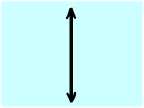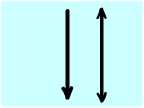| ( From page 1 A ): Siliceous spicules with or without spongin. | ||
 [A.]Megascleres Monacts ONLY, NO microscleres. (with the exception of one species which may or may not have centrotylote Strongyles as microscleres).
[A.]Megascleres Monacts ONLY, NO microscleres. (with the exception of one species which may or may not have centrotylote Strongyles as microscleres). [GO To page 3] |
 [B.]Megascleres Monacts with microscleres. NO Calthrops, NO centrotylote Strongyles as microscleres.
[B.]Megascleres Monacts with microscleres. NO Calthrops, NO centrotylote Strongyles as microscleres.[GO To page 21] |
 [C.]Megascleres Diacts ONLY. NO microscleres.
[C.]Megascleres Diacts ONLY. NO microscleres. [GO To page 73] |
 [D.]Megascleres Diacts with microscleres. NO Calthrops.
[D.]Megascleres Diacts with microscleres. NO Calthrops.[GO To page 47] |
 [E.]Megascleres Monacts AND diacts ONLY, NO microscleres.
[E.]Megascleres Monacts AND diacts ONLY, NO microscleres. [GO To page 114] |
 [F.]Megascleres Monacts and Diacts with microscleres. NO Calthrops; with OR without Rhaphides.
[F.]Megascleres Monacts and Diacts with microscleres. NO Calthrops; with OR without Rhaphides.[GO To page 129] |
 [G.]Megascleres Tetracts or derivatives (Monaenes, Diaenes, Triaenes
Dichotriaenes etc.) and Sigmaspires OR Microxeas OR Asters present (commonly spicules are very long - may have other spicules as well but NO Calthrops).
[G.]Megascleres Tetracts or derivatives (Monaenes, Diaenes, Triaenes
Dichotriaenes etc.) and Sigmaspires OR Microxeas OR Asters present (commonly spicules are very long - may have other spicules as well but NO Calthrops).[GO To page 199] |
 [H.]Megascleres Monacts, Triacts and/or Tetracts ONLY. May have Rhaphides as microscleres. NO Calthrops.
[H.]Megascleres Monacts, Triacts and/or Tetracts ONLY. May have Rhaphides as microscleres. NO Calthrops.[GO To page 210] |
 [I.]Calthrops ALWAYS present . May also have Monacts and/or Diacts
with Asters or other microscleres.
[I.]Calthrops ALWAYS present . May also have Monacts and/or Diacts
with Asters or other microscleres. [GO To page 212] |
 [J.]Hexacts or their derivatives ALWAYS present but also have other spicule types as well. The Symplastic sponges: Hexactinellida.
[J.]Hexacts or their derivatives ALWAYS present but also have other spicule types as well. The Symplastic sponges: Hexactinellida. [GO To page 241] |
||